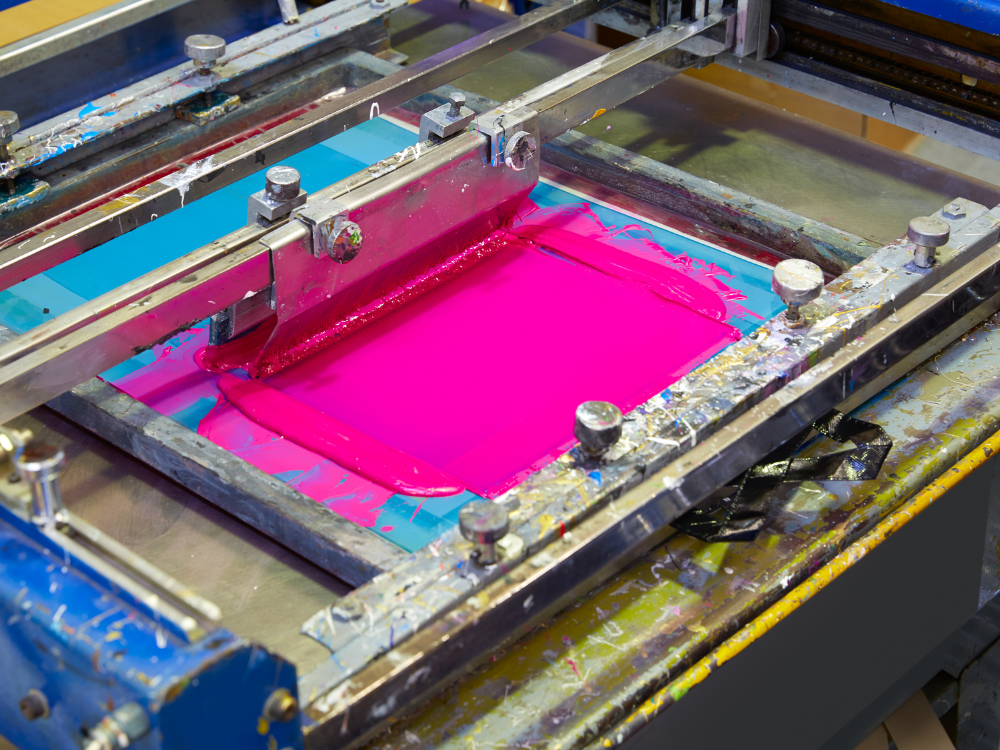Uncategorized
The Pros and Cons of Screen Printing for Your Business
The Pros and Cons of Screen Printing for Your Business
When it comes to promotional products, screen printing is a popular and versatile method for bringing your brand’s logo or message to life. From T-shirts and tote bags to mugs and posters, screen printing offers a reliable way to produce vibrant, eye-catching designs. However, like any printing method, it has its advantages and disadvantages. Here’s a closer look at the pros and cons of screen printing for your business.
Pros of Screen Printing
1. Vibrant Colors and High-Quality Finish
Screen printing is renowned for its ability to produce bold, vibrant colors that pop. The ink used in screen printing is thicker than in other methods, leading to a more intense color payoff. This makes your designs stand out and ensures that they are easily recognizable, even from a distance.
2. Cost-Effective for Large Orders
One of the biggest advantages of screen printing is its cost-effectiveness, particularly for large orders. Once the initial screen setup is complete, the cost per item decreases significantly with higher quantities. This makes screen printing an ideal choice for bulk orders, such as company T-shirts, promotional giveaways, or event merchandise.
3. Versatility Across Materials
Screen printing can be applied to a wide range of materials, including fabric, plastic, glass, metal, and wood. This versatility allows businesses to experiment with various promotional products, ensuring that your brand can be represented on almost any type of merchandise.
4. Long-Lasting Prints
The durability of screen-printed items is another major benefit. The ink used in screen printing is resistant to fading, cracking, and peeling, ensuring that your promotional items maintain their quality and visibility over time, even with repeated use and washing.
Cons of Screen Printing
1. Higher Initial Setup Costs
Screen printing requires the creation of custom screens for each color in your design, which can involve higher initial setup costs compared to other printing methods like digital printing. This upfront expense may be a drawback for smaller businesses or those with limited budgets, especially if you’re only ordering a small batch of items.
2. Limited Color Options and Complexity
While screen printing excels at producing vibrant colors, it’s less suited for designs that require intricate details or multiple colors. Each color in a design requires a separate screen, which can increase costs and complexity. Additionally, screen printing is not ideal for designs with gradients, fine lines, or photographic images, as these may not translate well in the final print.
3. Time-Consuming Setup Process
The screen printing process involves multiple steps, including screen preparation, ink application, and drying. This can make the process time-consuming, especially for complex designs or multi-color prints. If you’re working under tight deadlines, the longer turnaround time might be a disadvantage.
4. Environmental Considerations
Screen printing often uses plastisol inks, which contain PVC and phthalates—chemicals that can be harmful to the environment. Additionally, the cleaning process for screens can involve the use of solvents that contribute to pollution. While eco-friendly alternatives exist, they can be more expensive and harder to source, which might be a concern for environmentally conscious businesses.
Conclusion
Screen printing offers a range of benefits, from vibrant colors and durability to cost-effectiveness for large orders. However, it’s important to consider the potential downsides, such as higher initial setup costs, limited design complexity, and environmental impact. By weighing these factors, you can determine whether screen printing aligns with your brand’s needs and values, ensuring that your promotional items make the right impression.

